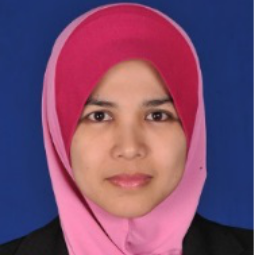
Mumtazimah Mohamad
Work place: Faculty of Informatics and Computing, Universiti Sultan Zainal Abidin, Terengganu, Malaysia
E-mail: Mumtazimah@unisza.edu.my
Website:
Research Interests: Computational Science and Engineering, Computational Engineering, Software Development Process, Software Engineering
Biography
Mumtazimah Mohamad completed her B.Sc in Information Technology (2000) from University Kebangsaan Malaysia, Malaysia, and her MSc. in Software Engineering (2005) from University Putra Malaysia. She received her Ph.D (2014) from Universiti Malaysia Terengganu in Computer Science. She joined Kolej Ugama Sultan Zainal Abidin in 2000 as a lecturer. She then joins Universiti Sultan Zainal Abidin, Terengganu, Malaysia in 2006, where she is currently employed as the Deputy Dean for Academic & Postgraduate since.
Author Articles
Enhancement Processing Time and Accuracy Training via Significant Parameters in the Batch BP Algorithm
By Mohammed Sarhan AlDuais Fatma Susilawati Mohamad Mumtazimah Mohamad Mohd Nizam Husen
DOI: https://doi.org/10.5815/ijisa.2020.01.05, Pub. Date: 8 Feb. 2020
The batch back prorogation algorithm is anew style for weight updating. The drawback of the BBP algorithm is its slow learning rate and easy convergence to the local minimum. The learning rate and momentum factor are the are the most significant parameter for increasing the efficiency of the BBP algorithm. We created the dynamic learning rate and dynamic momentum factor for increasing the efficiency of the algorithm. We used several data set for testing the effects of the dynamic learning rate and dynamic momentum factor that we created in this paper. All the experiments for both algorithms were performed on Matlab 2016 a. The stop training was determined ten power -5. The average accuracy training is 0.9909 and average processing time improved of dynamic algorithm is 430 times faster than the BBP algorithm. From the experimental results, the dynamic algorithm provides superior performance in terms of faster training with highest accuracy training compared to the manual algorithm. The dynamic parameters which created in this paper helped the algorithm to escape the local minimum and eliminate training saturation, thereby reducing training time and the number of epochs. The dynamic algorithm was achieving a superior level of performance compared with existing works (latest studies).
[...] Read more.Other Articles
Subscribe to receive issue release notifications and newsletters from MECS Press journals